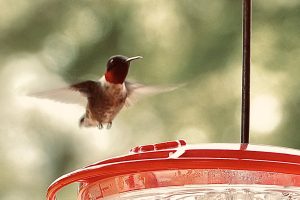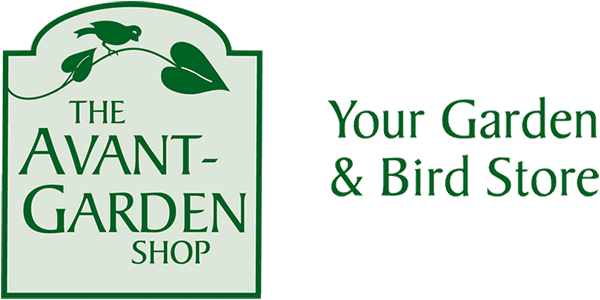 Watching any bird at your feeder can bring such joy, but there’s something special about the aerial magic of a Ruby-throated Hummingbird or the vibrant colour of a Baltimore Oriole. These species arrive in the Peterborough area in early May, and both have particular feeding needs that require different setups.
Watching any bird at your feeder can bring such joy, but there’s something special about the aerial magic of a Ruby-throated Hummingbird or the vibrant colour of a Baltimore Oriole. These species arrive in the Peterborough area in early May, and both have particular feeding needs that require different setups.
Hummingbirds
There are several species of hummingbird in North America, but the Ruby-throated is the only species east of the Rocky Mountains. They have green heads, wings, backs, and tails, and white bellies, with adult males boasting the namesake vibrant ruby-coloured throat.
Hummers burn energy like mad and need to refuel often. In their book, Up North: A Guide to Ontario’s Wilderness from Blackflies to the Northern Lights, Doug Bennet and Tim Tiner put hummers’ daily caloric requirements into human terms, saying that an 80-kilogram (176-pound) human would have to eat 45 kilograms (100 pounds) of Smarties and drink five cases of beer a day to “keep his skin from catching fire.”
There aren’t really any nectar-producing flowers in bloom when hummers return from the south in the early spring (they often sip sap and eat insects at Yellow-bellied Sapsucker holes), so they can really benefit from the support of bright red nectar feeders. Making a nectar solution for them is as simple as bringing 1 part plain white sugar and 4 parts water to a boil and letting it cool. Don’t add red food colouring! It’s bad for their health, so attract them with a red feeder instead. Make a large batch and store it in the fridge.
Nectar mixes ferment quickly, especially when it’s warm outside, so be sure to empty, rinse, and refill your feeder at least every 2 days to prevent the birds from getting sick.
Wasps and ants are drawn to the sugars in hummingbird nectar like… well… wasps and ants. We carry a variety of hummingbird feeders, including some that are wasp- and ant-proof.
Orioles
There are 2 oriole species in Ontario, the Baltimore and the Orchard. Both are black and orange, but the orange in Orchard Orioles is similar to a robin’s breast, while that in Baltimore Orioles is bright and vibrant. Baltimores are far more common around here and frequent urban areas and parks with large deciduous trees and open areas. This means that if you live in a neighbourhood with a few mature trees, you may be able to attract Orioles to your yard. If your neighbourhood is new and has no large trees, you might attract them during migration, but they likely won’t stay for long as they move on to suitable nesting habitat.
Orioles love the colour orange, oranges themselves, and grape jelly! They’ll eat oranges or drink nectar from orange-coloured feeders. We carry a variety of oriole feeders that provide nectar, a place for orange slices, grape jelly cups, or combinations of these treats.
As with hummingbirds, the high-sugar content of the foods that attract orioles ferment quickly and need to be replaced often. Be sure to clean the feeder whenever you replace their food.
Investing in enjoyment
Sometimes “you get what you pay for” isn’t true, but it really does apply to bird feeders. Our high-quality feeders may cost a bit more, but they’re built to last, often with lifetime warranties, and online review for Aspects and Droll Yankee bird feeders are 5-star.
Photo credits (thank you!): Baltimore Oriole, Patty Latour; Ruby-throated Hummingbird, Len Cotton
